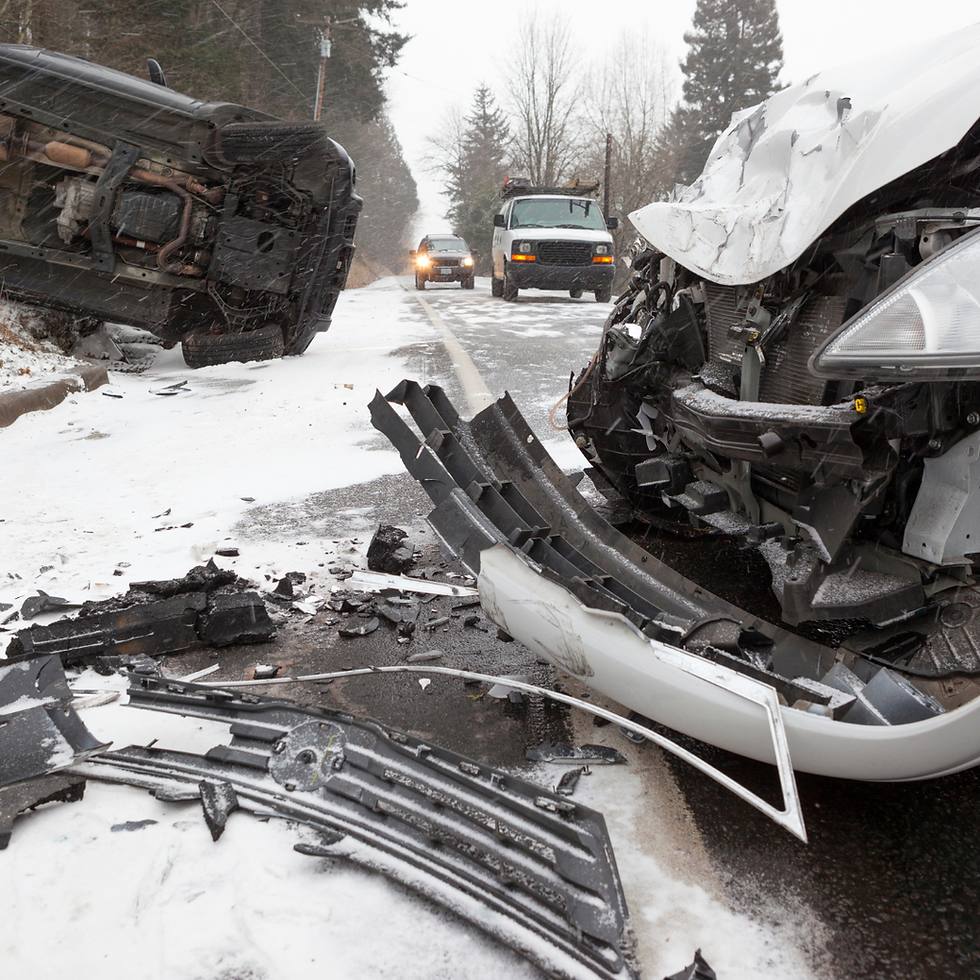Virginia’s Pure Contributory Negligence: How Even 1% Fault Can Kill Your Claim
- Scott Andrews
- Oct 1
- 4 min read

The rule in plain English
Most states let injured people recover money even if they were partly at fault, reducing their payout by their percentage of blame (that’s called “comparative negligence”). Virginia is different. Under pure contributory negligence, if you are even 1% responsible for causing your own injuries, you can be barred from recovering any money from the other party.
That’s why insurance companies in Virginia work hard to pin any share of fault on you—even small mistakes or split-second decisions.
Why the rule is so harsh in practice
All-or-nothing: There’s no partial recovery. It’s either 0% at fault (eligible) or anything above 0% (ineligible).
Evidence becomes critical: Photos, witnesses, dashcam footage, store videos—tiny details can decide whether you’re at 0% or 1%.
Insurer strategy: Adjusters often ask “friendly” questions to get you to admit minor blame (e.g., “You didn’t see him until the last second?”). In Virginia, that can be fatal to your claim.
Real-world examples (and how contributory negligence plays out)
1) Rear-end crash with a twist
Scenario: You’re stopped and get rear-ended. Normally, the trailing driver is at fault. But if your brake lights were out and the other driver reasonably couldn’t tell you were stopped, an insurer may argue you share some fault.Risk: If they convince a jury you were even 1% negligent, you recover $0.
What helps: Recent inspection records, maintenance receipts, or witness statements that your lights were working minutes before the crash.
2) Left-turn collision at an intersection
Scenario: A speeding driver hits you while you’re making a left turn on a green (not an arrow). In many states you’d still recover something because their speeding was major fault.In Virginia: If the insurer shows you misjudged the gap or “failed to yield,” they’ll argue you’re at least 1% at fault and try to bar recovery.
What helps: Intersection camera footage, skid marks, expert analysis of speed/timing, and witnesses confirming the other driver’s excessive speed.
3) Pedestrian steps off the curb early
Scenario: You start crossing as the light turns, but not fully inside the crosswalk, and a distracted driver clips you.In Virginia: The driver’s distraction is bad, but if you weren’t in the crosswalk or misread the signal, the defense will argue you share fault.
What helps: Signal timing data, surveillance video, and testimony confirming driver inattention (phone use, no braking, etc.).
4) Grocery store slip-and-fall
Scenario: There’s a clear spill and no warning cones. You slip and get hurt.In Virginia: The store may argue you should have seen the spill (open and obvious hazard) or that your footwear was unsafe for conditions—anything to assign you some fault and bar recovery.
What helps: Photos of the scene taken immediately, witness statements, and proof that the hazard wasn’t obvious (clear liquid on shiny floor, blind corner, poor lighting).
5) Motorcycle “looked but didn’t see”
Scenario: A driver changes lanes into a motorcyclist. In many places, the driver’s lane change would dominate liability.In Virginia: If the rider slightly exceeded the speed limit or wasn’t using headlights in low light, the defense will try to assign the rider a sliver of blame.
What helps: Helmet-cam or dashcam footage, light sensor data, headlight settings, and expert reconstruction.
The “Last Clear Chance” safety valve (narrow and fact-specific)
Virginia recognizes a limited exception called last clear chance. If the defendant had the final, clear opportunity to avoid the accident but didn’t, an otherwise barred plaintiff may still recover. It’s not a get-out-of-jail-free card—courts apply it narrowly, and it’s very fact-dependent. Think: the other driver actually saw you in peril with enough time and space to avoid you but failed to act.
Common traps insurers set (and how to avoid them)
Recorded statements right away: Adjusters may ask leading questions to elicit tiny admissions (“I might’ve been going a bit fast”). You’re not required to give a recorded statement to the other driver’s insurer.
Social media posts: A casual line like “I didn’t see him coming” can be twisted into an admission of fault.
“Minor” inconsistencies: Changing small details later (“maybe the light was yellow”) gets portrayed as credibility issues—hurting your shot at 0% fault.
Smart moves:
Document everything immediately: Photos, video, weather, road conditions, vehicle positions, injuries.
Identify witnesses: Names, numbers, quick voice memos while memories are fresh.
Preserve video: Ask nearby businesses/homes for camera footage ASAP (many systems overwrite in days).
Get medical care quickly: Gaps in treatment are used to question causation.
Be cautious with statements: Keep it factual and minimal at the scene; consider legal guidance before speaking with insurers.
FAQs
Q: If I’m even a little at fault, should I give up?A: Not necessarily. Fault is a legal conclusion built from facts. Thoughtful investigation (video, experts, timelines) can defeat attempts to assign you that “1%.”
Q: What if the other driver was ticketed?A: Helpful, but not determinative. Civil liability is separate. The defense can still argue you contributed.
Q: Does an apology equal fault?A: An apology can be spun as an admission. Stick to checking for injuries and exchanging information.
Q: How long do I have to bring a claim?A: Virginia deadlines are strict. Speak to a lawyer quickly so evidence isn’t lost and timelines aren’t missed.
Bottom line
Virginia’s pure contributory negligence rule makes fault battles the heart of most injury cases. Small details decide outcomes. The earlier you preserve evidence and avoid unforced errors—especially recorded statements and careless social posts—the better your chances of keeping your fault at 0% and preserving your right to compensation.




Comments